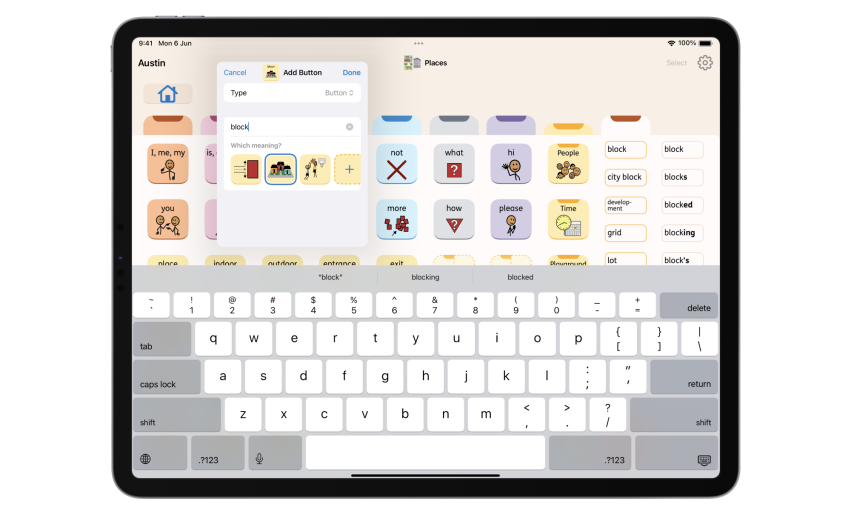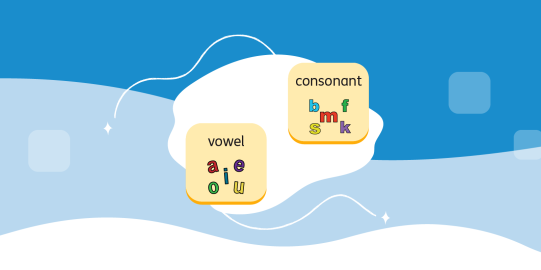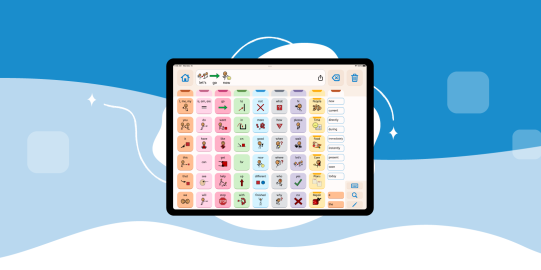A good vocabulary is essential
The vocabulary is the most important part of any symbol supported AAC system. AAC users who cannot spell yet are limited to the words other people select for them. It is common for both parents and professionals to limit the vocabulary to the words that seem most immediately relevant to a new user. There is no evidence that this is helpful to the AAC user. Instead, research demonstrates that people generally learn the same words in roughly the same order. Anyone who knows and uses only 3000 English words uses more or less the same words, irrespective of their age. This means that everyone learning to communicate in English needs access to the same base vocabulary of common and important words. Proloquo’s vocabulary was carefully planned and curated to include all these words.
The organization of those words is equally important. The easier it is to select the word you want, the more likely you will use the system effectively. This is why AAC vocabularies are often referred to as language systems. They are so much more than a collection of words. In fact, in most clinically robust AAC systems, the vocabulary has a name of its own. Well-known vocabularies include PODD™, Unity®, LAMP Words for Life®, Crescendo™, and WordPower™. The new vocabulary in Proloquo is called Crescendo Evolution™.
Building a solid AAC vocabulary requires a deep understanding of language development, linguistics, AAC best practice, and related fields. While many AAC experts have experience personalizing and adapting a vocabulary for the AAC users they work with, very few people have the knowledge, experience, and time to build a strong AAC vocabulary. Making changes to such a research-based, well-thought-out AAC vocabulary should be done with care.
The flip-side of flexibility
There are three types of changes that can be made as part of personalizing an AAC vocabulary:
- Removing or changing words from the base vocabulary
- Moving words in the base vocabulary to a new location
- Adding personally relevant words to the base vocabulary.
In Proloquo, we made the radical decision to lock down the base vocabulary and prevent the first two forms of personalization. We did this because of our experience with Proloquo2Go.
In Proloquo2Go, users can remove, change, and move any word. This can be done anywhere in the vocabulary, from the home page to the core word templates to the fringe folders. In practice, we noticed that the least knowledgeable parents, educators, and therapists often made the most changes. In many cases, we observed changes that did not align with AAC best practice and undermined AAC users' ability to grow their language over time. Ideas like "my child is not ready for these words" or "my student will never need these words" drove many to make changes to the Proloquo2Go vocabulary.
AAC is often used in classrooms that have multiple AAC users. We noticed that even students using the same app with the same vocabulary could have essential words located in different places. Teachers and therapists often had no idea where parents “had put” certain words. In other cases, parents would complain about the school making “random” changes. We ran several pilots with Proloquo2Go in schools in Australia and the United States. We saw that communication success increased significantly after school-wide decisions to use a single grid size without making changes to the base vocabulary. Modeling became easier when every student had the same layout. Teachers and staff no longer struggled to help students find words on their device.
Modeling is so important in teaching students to communicate with AAC. We designed Proloquo to facilitate modeling across individuals and environments through a non-editable base vocabulary and a consistent motor plan.
Personalizing where it counts
The motor planned, non-editable base vocabulary guarantees that common and important words are always available and always in the same location. But we recognize that personalizing a vocabulary with words important to that user is essential. The design of the tabs and folders provides a good structure and plenty of space for users to add their personally relevant words.
We made sure to heavily optimize the base vocabulary. It provides easy access to the words most commonly used by AAC users and all English speakers. It covers essential concepts and curriculum words. It is suitable for all ages so that it can grow along with the user. This ensures that every user has access to the same important words without restricting them based on anyone’s ideas on what they can or cannot yet understand. It allows AAC users to explore and discover new words.
Our research using anonymous language use data from actual AAC users revealed that there are many words that are only used by a small number of AAC users. These are words that are often essential to those users. They can range from people or place names, to words associated with specific hobbies or personal interests, to specific slang expressions. We reserved plenty of space for these kinds of words. There is space on most pages to add buttons with symbols. It is also possible to add Related Words™ to any of the existing buttons. For example, a user who sometimes likes to use dope as an alternative to good can add it as a Related Word to good.
We also made it easy to add new buttons. Tap on an empty spot and type in the word. Proloquo will, in most cases, offer you a number of pre-made buttons to choose from. For example, for the word block, it will ask you what you mean by block? Is this about a block to play with, about blocking something, or about a city block? Tap on any of the suggested buttons and you will see what the button will look like and what Related Words it will include. In some cases, you will even be able to select the symbol that you prefer. If what you have in mind is not offered you can hit + to browse for a symbol and add any Related Words.






